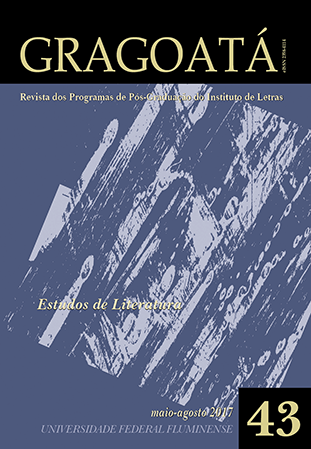<i>The Trickster of Seville</i>, Don Juan before the myth
DOI:
https://doi.org/10.22409/gragoata.v22i43.33499Keywords:
Don Juan. The trickster of Seville. Tirso de Molina. Golden Age Spanish Theatre.Abstract
It’s reasonable to assume that many readers have an idea of a “Donjuanism” derived from other versions and orchestrated by other concerns and eras’ sensitivity. It is amazing to notice that what attracted the interest of writers and audiences from different literary traditions doesn’t match what its first author wanted to address, that is, the compulsive erotomania of a character that paradoxically expresses the inconstancy and the impossibility of love, such an attractive subject to the contemporary mentality, which wasn’t the main subject nor an end in itself but a way to dramatize other concerns such as the impunity of the powerful, Republic’s good government, the corruption of the nobiliary youth and the salvation of souls. In this article I’m going to discuss some aspects of this classic playwriting in order to awaken the lay reader’s interest in its connected themes and the complex intertext, both diachronic and synchronic where inevitably is inserted its interpretation: the Spanish theater of the Golden Age and the sociopolitical context of the time.
---
Original in Spanish.
---
DOI: http://dx.doi.org/10.22409/gragoata.2017n43a938.
Downloads
Downloads
Published
How to Cite
Issue
Section
License
Authors who publish in Gragoatá agree to the following terms:
The authors retain the rights and give the journal the right to the first publication, simultaneously subject to a Creative Commons license CC-BY-NC 4.0, which allows sharing by third parties with due mention to the author and the first publication by Gragoatá.
Authors may enter into additional and separate contractual arrangements for the non-exclusive distribution of the published version of the work (for example, posting it in an institutional repository or publishing it in a book), with recognition of its initial publication in Gragoatá.

Gragoatá is licensed under a Creative Commons - Attribution-NonCommercial 4.0 International.











